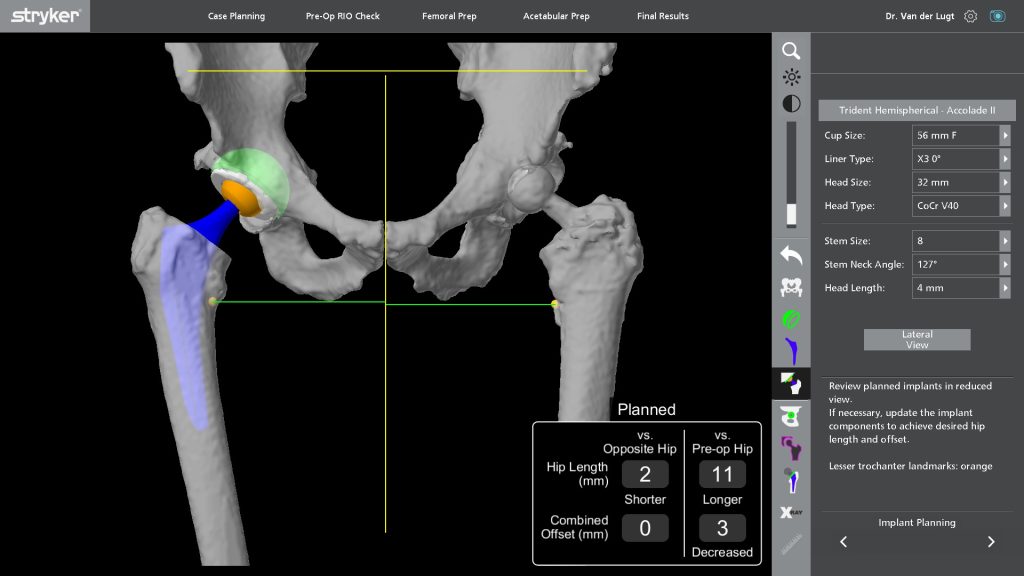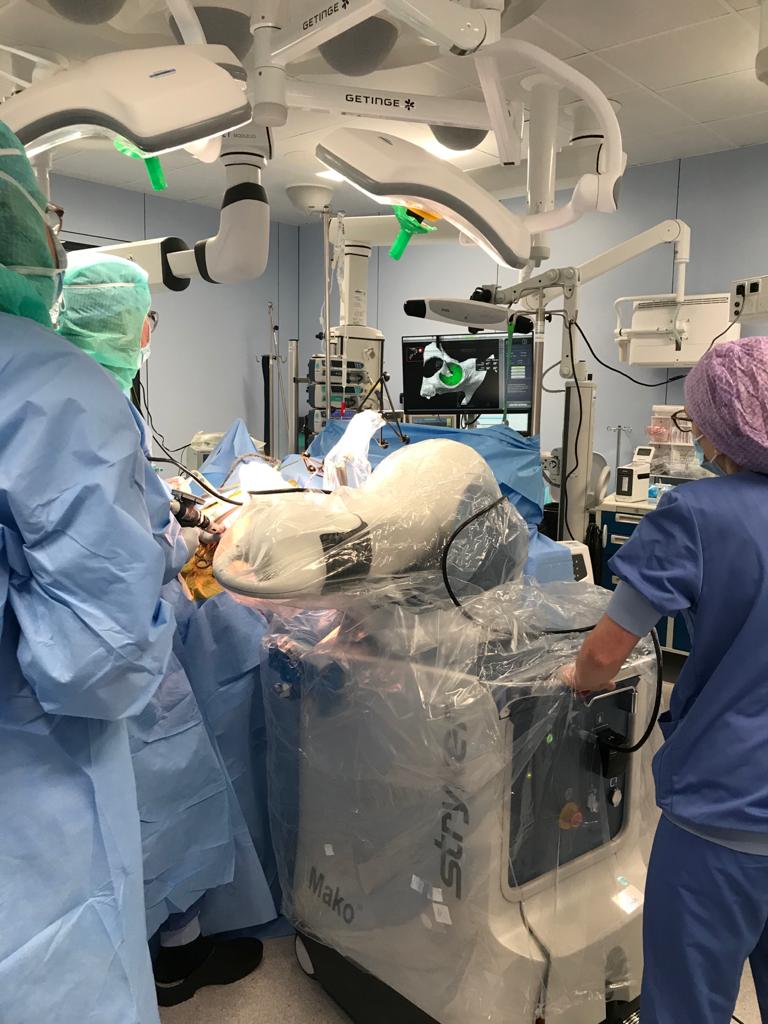Introduction
The MAKO robotic surgery method from the Stryker company has existed for some years. The advantage of this method is an optimal placement of the prosthetic components on the basis of a preoperative CT scan. This CT scan is used to scan the bone and determine the best position of the prosthesis in the bone. During the operation, markers are placed that are observed by a camera. The pre-operative CT scan is projected over the patient, as it were. This way, the robot knows exactly where the patient lies and how the joints are oriented.


Determining sawing surfaces
So with the markers in the bone, the robot knows how the patient is lying, but not yet which part of the bone needs to be sawed. With a kind of pen, 15 to 30 points are marked on the bone and registered by the camera. If the margin of error is less than 0.4 millimetres, the robotic arm can be set and used to mill the hip socket or saw the knee.
Placement of prosthesis
Now the prosthesis can be inserted, again checked by the robot. Finally, the orthopedic surgeon makes a final check of the stability of the prosthesis and closes the wound.

Aftertreatment
The after-treatment is the same as for patients operated on without the robot.
Purpose of robotic surgery
A better positioning of the prosthesis which improves the function with a longer lifespan of the prosthesis. At the moment, however, the operation time has to be reduced even more. Currently, it is still 10-20% longer than the standard operation time of 50-60 minutes. Unfortunately, there is still little scientific data to show that robotic surgery is better than the standard method, but the first results are encouraging.


